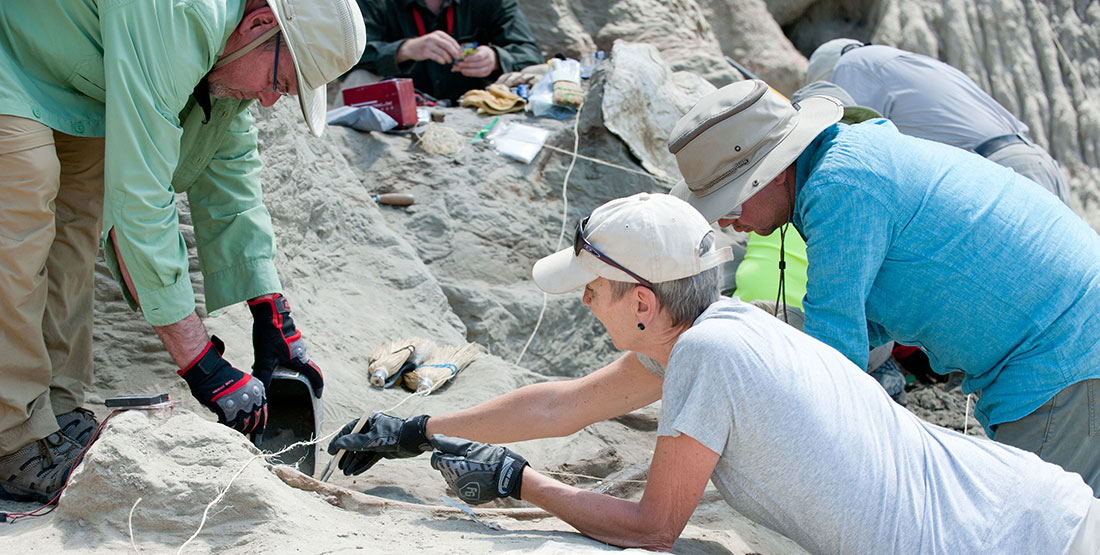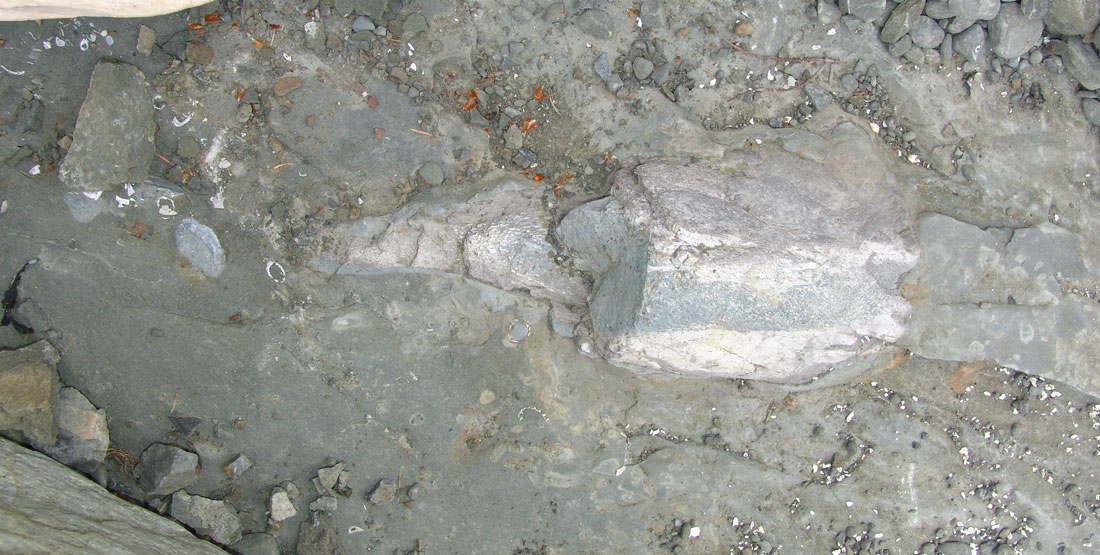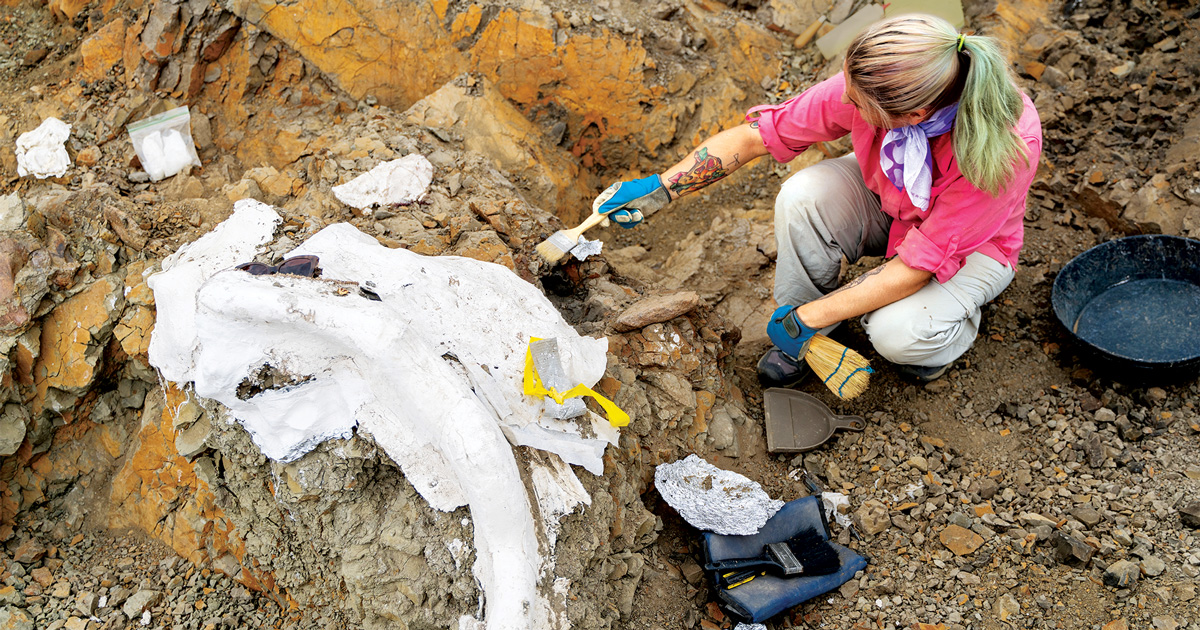Burke Museum of Natural History and Culture paleontologists have made an extraordinary finding, documenting the first dinosaur fossil ever discovered in Washington state. The fossil was uncovered by a research team from the Burke Museum on the shores of Sucia Island State Park, located in the San Juan Islands.

While collecting ammonite fossils in the Cedar District Formation, a marine rock area, the Burke Museum researchers stumbled upon a small section of exposed bone on the rock’s surface. Intrigued, they returned with a team of paleontologists to excavate the fossil and enable its study at the Burke Museum.
In a study published in the journal PLOS ONE on May 20, Christian Sidor, the museum’s curator of vertebrate paleontology, and University of Washington graduate student Brandon Peecook describe the fossil in detail. It is a partial left femur belonging to a theropod dinosaur, a group that includes famous dinosaurs like Velociraptor, Tyrannosaurus rex, and modern birds. While the fossil is incomplete, it measures 16.7 inches in length and 8.7 inches in width. Comparisons with other museum specimens suggest that the complete femur would have exceeded 3 feet in length, slightly smaller than that of a T. rex. The fossil originates from the Late Cretaceous period, estimated to be around 80 million years old.
Sidor and Peecook determined that the femur belonged to a theropod dinosaur based on two distinctive characteristics. Firstly, the hollow middle cavity of the bone, where marrow once resided, is unique to theropods during this period. Secondly, a prominent feature on the bone’s surface, known as the fourth trochanter, is positioned relatively close to the hip. This combination of traits is specific to theropod dinosaurs.
Peecook explains that the fossil contributes to our understanding of what the West Coast was like 80 million years ago. The discovery also marks an important addition to the fossil record of the region, which is relatively sparse compared to the interior of North America. With this find, Washington becomes the 37th state in the United States where dinosaur fossils have been discovered.

Within the hollow part of the bone, paleontologists found fossilized prehistoric clams, indicating that the dinosaur fossilized in marine rock. These exceptionally preserved clams, identified as Crassatellites conradiana, provide valuable insights into the other life forms that existed alongside the dinosaur.
The Burke Museum holds the fossil in trust on behalf of Washington State Parks. Scientific collecting permits were obtained prior to the excavation, ensuring that the fossil was collected legally and remains the property of the public. The fossil will be displayed in the Burke Museum’s lobby, allowing the public to marvel at Washington state’s first dinosaur fossil starting from Thursday, May 21.
The rarity of dinosaur fossils in Washington state can be attributed to the fact that most of the region was underwater during the time that dinosaurs roamed the Earth. The fossil’s journey to Sucia Island State Park began around 80 million years ago when the rocks that now form the island were likely deposited farther south. Geologic forces eventually moved these rocks north to their present-day location.

Lisa Lantz, stewardship manager for the Washington State Parks and Recreation Commission, emphasizes the significance of protecting natural areas for both recreational and scientific purposes. The discovery of this fossil underscores the importance of preserving such places for long-term benefit and scientific research.



